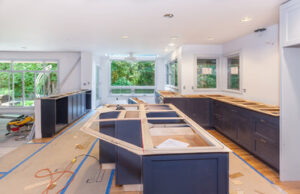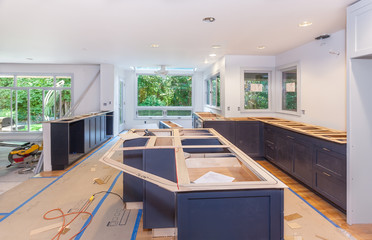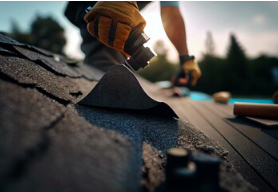Cabinets are one of the most influential and expensive components in a kitchen remodel or new home build. They set the tone for the space and offer endless design possibilities.
Choosing the right cabinets is time-consuming and surprisingly complicated. A single mistake can cause lasting problems that are difficult to fix. Visit https://thompsonandboys.com/ to learn more.
Cabinets are one of the most important features in a kitchen, and can significantly affect the overall look and feel. Gray cabinets are a versatile option that can easily fit into a variety of design styles and can be combined with other colors and finishes for a unique look. They also make a great choice for kitchens that are opened up to natural light.
Custom cabinets are constructed by hand, rather than on a factory assembly line. This process requires time and skill, but it also results in a quality product that will last for years to come. Custom cabinet makers use tried and true construction methods, such as mortise and tenon joinery and dovetail drawer construction, which makes them stronger and more durable. In addition, they use premium plywood box construction that is carefully inspected to ensure only the highest-quality materials are used.
In contrast, stock cabinets are pre-built units that come in a set of standard sizes and designs. These cabinets are a quick and economical solution for home remodels, but they do not offer the versatility of custom cabinets. However, semi-custom cabinets are a great option for homeowners who want a custom look without the cost of custom cabinets. Semi-custom cabinets are available in a wide range of designs, door types, and wood species, and can be customized with hardware and accessories.
Moreover, custom cabinets are easier to install than stock and semi-custom cabinets. They are built to order, which allows for a faster turnaround time and more accurate measurements. They are also crafted to be more durable than their stock and semi-custom counterparts, using premium hardware and quality finishes. Additionally, custom cabinets have a wider selection of storage features than stock and semi-custom cabinets, such as hidden doors to adjacent rooms, ladders within a drawer to reach higher cabinets, and charging stations.
Custom cabinets are a long-term investment, so it’s important to consider the pros and cons of each type before making your decision. If you’re ready to invest in a new kitchen, talk to the experts at MainStreet Design Build. They have been building amazing homes for 30 years and have extensive experience with custom cabinetry.
Durability
Cabinets are subjected to significant wear and tear from everyday use. They have to endure heavy food items, glasses and dishes, and other kitchenware. High quality cabinets can last 20-30 years, and they are also resistant to water and repel moisture. They also offer a lifetime warranty. However, cheaply made cabinets only last five to 10 years. They may even need replacement before the warranty expires.
The biggest factor in cabinet durability is the construction of the back panel. The most robust cabinet construction uses a thick (3/8-inch or more), full-plywood, full-back panel. This panel allows the cabinet to be attached to wall studs at any point, and it provides strength from top to bottom and side to side. Less expensive methods use thin panels, metal hangs rails and brackets, rails, or picture-frame construction. These weaker backs often result in collapsed cabinets.
Other factors that contribute to a cabinet’s strength include the wood used, hinge and drawer-glide systems, and face frames. High quality natural woods like maple, cherry and birch are extremely durable. They can be measured for strength using the Janka hardness scale, which tests how much force is required to drive a steel ball halfway into the wood. Particle board and MDF, on the other hand, are prone to damage from moisture, and have shorter lifespans than plywood and solid wood.
High-quality cabinets have adjustable hinges and drawer-glide systems that are strong, quiet, and easy to open and close. They also have soft-close systems that prevent slamming of the drawer. Custom cabinets also have a choice of drawer boxes, including dovetail and mortise and tenon. The latter use traditional craftsmanship techniques and have stronger joinery than the former.
Another important factor in cabinet durability is the quality of the material used to make the doors. Melamine is a common material for cabinet doors, but it’s not as durable as other options. This material is manufactured by fusing resin-infused decorative paper onto a particleboard substrate. The process involves heat and pressure. The resulting product is durable, and it’s a good alternative to wood veneer.
Easy to clean
The best way to keep cabinets clean is to use a gentle cleaning solution once or twice a week. This helps keep grease, grime and smudges to a minimum and prevents buildup. It also makes it easier to remove sticky residues from hard-to-reach places like knobs and handles.
To create a gentle cleaning solution, pour a few squirts of mild dish soap and hot water into a spray bottle. Spray the solution onto a microfibre cloth or soft rag until it is damp (not drenched). Then, wipe the cabinet surfaces thoroughly. Remember to pay special attention to the corners of cabinets, trim and moulding where dust tends to collect.
Using too much water or harsh chemicals can damage the finish of wood cabinetry and cause stains, discolouration or even warping of the surface. The same is true for hanging wet cloths or towels over cabinets for extended periods of time, which can cause damage.
When it comes to removing water spots, the safest approach is to rub gently with a non-abrasive sponge or scrub brush. A little baking soda sprinkled on a damp cloth may also help dissolve tougher stains and grime. For the most stubborn water stains, a mild abrasive like toothpaste may help.
If you prefer to use a commercial cleaner, follow the instructions on the label. Never spray the product directly on the cabinets or their hardware, as this can damage the varnish finish.
The easiest cabinets to clean are slab-front models with flat panel doors, which don’t have the ridges and grooves of older cabinet styles that require more effort to maintain. TaylorCraft Cabinet Company’s OE9 inside edge, rounded OE6, OE15 or angled OE13 outside edges paired with flat panels make for the easiest cabinet doors to keep clean.
If your cabinets aren’t in the best condition, painting them is an affordable and easy project. The most important thing to remember when painting cabinets is to prep properly by emptying the cupboards and wiping down all of the surfaces. This is essential to ensure a professional-looking finished product.
Customization
There are many ways to customize cabinetry for your home, allowing you to create the perfect look and feel. Custom cabinetry is typically crafted of high quality lumber and finished with custom details and accents. These features can include rub through enhancements for a rustic charm or hand-applied glazes for a traditional touch. You can also choose from an enormous range of color and profile options, ensuring that your cabinets will perfectly complement your home’s style.
Cabinetry is one of the most influential and expensive purchases in a home, so it’s important to make sure that you choose the right type for your needs. There are three general cabinet grades: stock, semi-custom, and custom. Stock cabinets are pre-built and have a limited number of design options. They are available at most home improvement centers and can be installed fairly quickly.
Semi-custom cabinets offer more customization options than stock cabinets, but they do not have the carte blanche options described with custom cabinets. However, they are still significantly less costly than custom cabinets.
Choosing the right cabinetry is vital, as it will set the tone for the entire room. While most homeowners opt for stock or semi-custom cabinetry, custom cabinets provide the most customizable and highest-quality option. Custom cabinets are made to order and come in a wide variety of styles, finishes, colors, and door options. They are crafted of higher-quality materials than standard cabinets and are designed to last for generations.
Cabinets are an integral part of the overall design of a kitchen, bathroom, basement, bar, or mudroom. They can be used to define a style or to make the space more functional. They can also be made to suit your unique lifestyle and preferences.
Aside from the style and design, custom cabinets can also be customized with various accessories and hardware. These can include a variety of knobs and pulls, as well as under cabinet lighting and decorative doors or wood hoods. You can even add metal accents to your drawers to help elevate the look of your space. These accents can be as simple or sophisticated as you like, and they are a great way to add a personal touch to your home.

